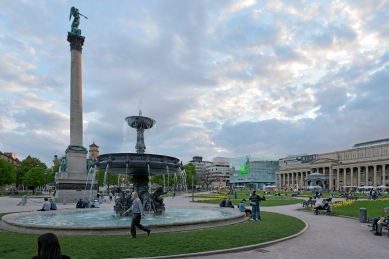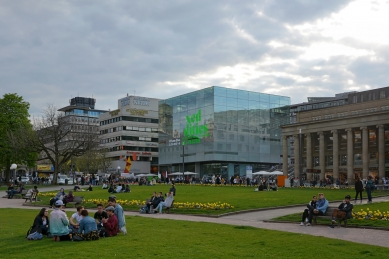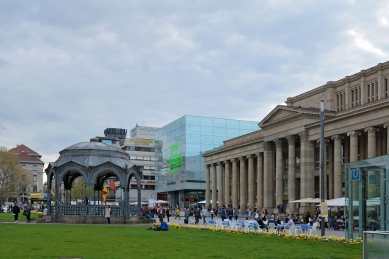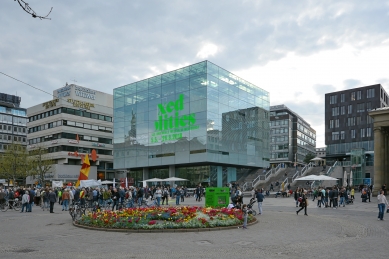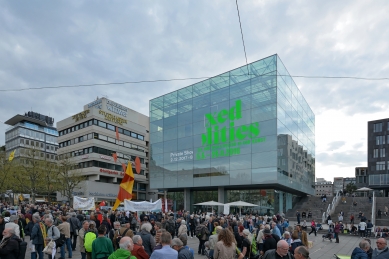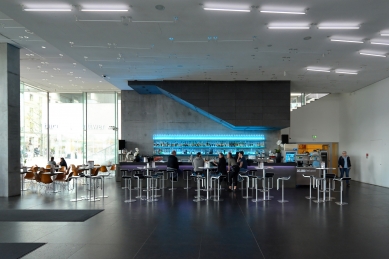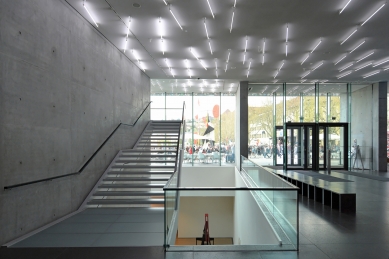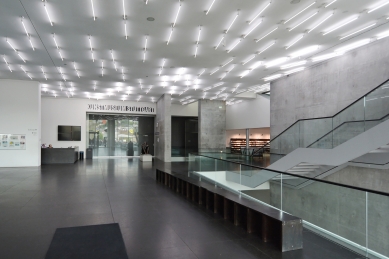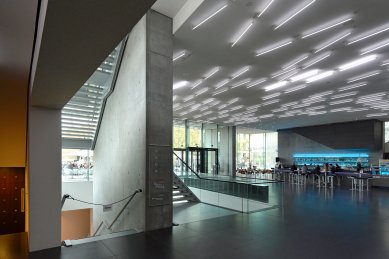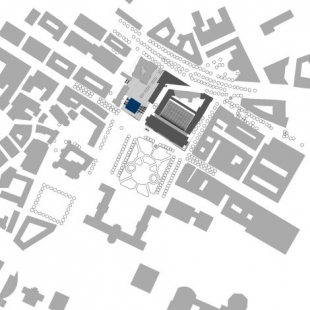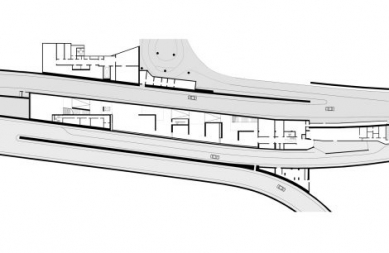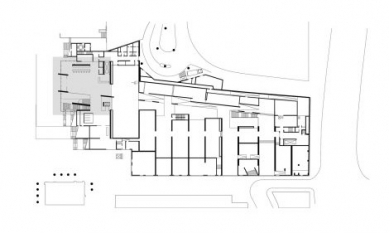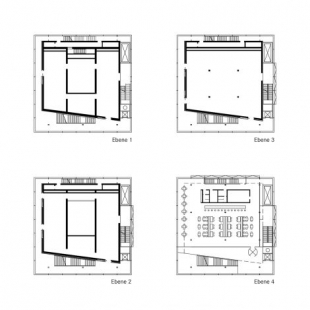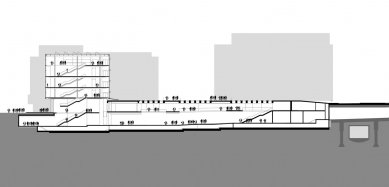
New Art Museum in Stuttgart
New Art Museum in Stuttgart

Museum buildings are thriving unusually well in the capital of the federal state of Baden-Württemberg. The New State Gallery by postmodernist James Stirling and the Mercedes Museum by the Dutch UNStudio equally attract car enthusiasts and fans of digital architecture.
The glass cube "Neues Kunstmuseum" in the castle square in the center of Stuttgart is, on the other hand, a pure example of minimalism as interpreted by the Berlin studio Hascher Jehle, whose design won an international competition in 1999 and was opened to the public in March 2005. Aside from the new S21 station, no other project has sparked greater public debate in Stuttgart recently. The authors attempted to create "a calm elegant object that would firmly root itself in today's time," which many opponents of simple lines could not tolerate in the historical environment. While during the day the building reflects the surrounding buildings on its facade, at night it becomes transparent, lights up like a lantern
and allows a glimpse into the interior to the inner stone cube clad in limestone from Dietfurt in Bavaria.
The museum is a successor to the Stuttgart City Gallery. Its collections range from Swabian Impressionists of the 19th century to contemporary painters. It offers 5000 m² of exhibition space across four above-ground floors. The other two-thirds of the building are located in a massive plinth, which is accessible for supplies from an underground four-lane tunnel, allowing Schloßplatz to remain a pedestrian zone.
The new museum is located on the site of the former Crown Prince's Palace, which was heavily damaged by air raids in 1944 and whose ruins were removed in 1963. The original building was also important from an urban planning perspective, as it enclosed the square and created a counterpoint to the Palace of King Wilhelm I of Württemberg. For several decades, the demolished palace was replaced by a busy six-lane road, which was, however, relocated to a tunnel at the turn of the millennium, and the square was closed off again.
The glass cube "Neues Kunstmuseum" in the castle square in the center of Stuttgart is, on the other hand, a pure example of minimalism as interpreted by the Berlin studio Hascher Jehle, whose design won an international competition in 1999 and was opened to the public in March 2005. Aside from the new S21 station, no other project has sparked greater public debate in Stuttgart recently. The authors attempted to create "a calm elegant object that would firmly root itself in today's time," which many opponents of simple lines could not tolerate in the historical environment. While during the day the building reflects the surrounding buildings on its facade, at night it becomes transparent, lights up like a lantern
and allows a glimpse into the interior to the inner stone cube clad in limestone from Dietfurt in Bavaria.
The museum is a successor to the Stuttgart City Gallery. Its collections range from Swabian Impressionists of the 19th century to contemporary painters. It offers 5000 m² of exhibition space across four above-ground floors. The other two-thirds of the building are located in a massive plinth, which is accessible for supplies from an underground four-lane tunnel, allowing Schloßplatz to remain a pedestrian zone.
The new museum is located on the site of the former Crown Prince's Palace, which was heavily damaged by air raids in 1944 and whose ruins were removed in 1963. The original building was also important from an urban planning perspective, as it enclosed the square and created a counterpoint to the Palace of King Wilhelm I of Württemberg. For several decades, the demolished palace was replaced by a busy six-lane road, which was, however, relocated to a tunnel at the turn of the millennium, and the square was closed off again.
The English translation is powered by AI tool. Switch to Czech to view the original text source.
0 comments
add comment


